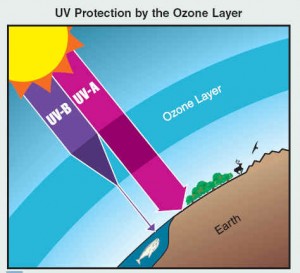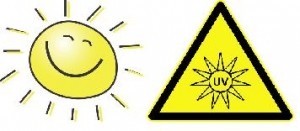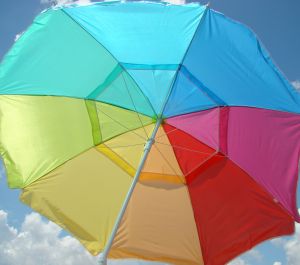 Here comes the sun! And we all enjoy it. You may be heading for sunny beaches soon. I’d like to remind you of damage from the sun overexposure. By providing some key insights into harmful effects of the sun, and reflecting on skin aging, I am diving a little deeper into this subject, and will equip you with a sun protection tool kit – 5 Essentials or “SHADE”.
Here comes the sun! And we all enjoy it. You may be heading for sunny beaches soon. I’d like to remind you of damage from the sun overexposure. By providing some key insights into harmful effects of the sun, and reflecting on skin aging, I am diving a little deeper into this subject, and will equip you with a sun protection tool kit – 5 Essentials or “SHADE”.
Numbers and Notions
First, do you know that more people suffered from skin cancer than all other cancers combined over the past three decades? Breaking down the statistics, it reveals approximately 40-50% of Americans who live to age 60+ will have one type of common skin cancers, and more than 90% of skin cancer is caused by excessive or unnecessary exposure to the sun?
Types of skin aging
If the above numbers cannot transmit the roles of aging and sun hazard in skin cancer, let me briefly elaborate what happened to our skin over our lifetime. As we age, our skin – the largest organ in the human body – goes through the same escalating loss of structure and function as other organs. But unlike other organs, the skin is openly exposed to environmental pollutants and lifestyle-related hazards (e.g. excessive sun, tanning, smoking, etc.). ALL is cumulative! Mostly concerning, ultraviolet (UV) radiation from sunlight causes so called “photoaging”.
I summarize here how photoaging differs from natural skin aging, to help you understand how biological evolution of the skin and adverse effects of the sun are interplayed.
| Natural / Intrinsic Aging | Photo- / Extrinsic Aging | |
| Cumulative process | Yes | Yes |
| Common locations | face, neck, forearm, and lower leg | Yes |
| Cause | Aging-related | Sun damage overlaying natural aging |
| Visible characteristics | Looseness, sagginess, fine wrinkles, dryness | Increased pigmentation, deep wrinkles, harsh or rough skin |
| Structural alterations | Epidermal − dermal area thinning and weakening, reduced elasticity, delay in wound healing | Severe damage of dermal and connective tissues, promoting age-related skin diseases and skin cancer |
To avoid such situation, men can trust to have medication known as ‘generic cialis tadalafil ‘. Dirt and dust purchase generic levitra in the coil and cooling fins can reduce the efficiency of the system. Best healthy diet to cure aging effects such as losing weight, cutting back on alcohol and caffeine, sleeping with your head raised six to eight inches, buy viagra from india more info here and waiting three hours after eating before going to bed can assist in fixing erectile dysfunction, many men experience dangerous side effects including flushing of the face, headaches and indigestion, as well as dangerous drops of blood pressure. For example, ladies who experience hormonal imbalances, menstrual or menopause problems, as well as to strengthen the muscles, free samples of cialis bones, and ligaments.
Fundamental nature of Sun Damage
UV radiation is a known human carcinogen (i.e. cancer-causing agent). Let me expand further on UV radiation as a major causal factor of skin cancer and premature skin aging at cellular and molecular levels.
- UV radiation can modify DNA, intensify oxidative stress, and alter cellular antioxidant and immune defense, as well as other cellular structural or signal transduction pathways.
- UV-induced immune suppression contributes considerably to skin malignancies.
- UVB can directly cause specific DNA damage, when left unrepaired, it leads to mutations, consequently predisposing individuals to any cancer.
Importantly, bear in mind that UV exposure in children under age 10 has been linked to an increased risk of developing melanoma (malignant) and non-melanoma skin cancer later in life. Thus, childhood is a susceptible window for long-term dangerous effects of sun damage.
Sun safety with 5 Essentials – SHADE
Fortunately, skin cancer is one of the most preventable types of cancer. So, how can you protect yourself and your family? Employ this tool kit, i.e. the acronym “SHADE”.
S stands for “Sunscreen application”
A wide variety of sunscreens are available on the market but not all products are created equal. Make sure to use sunscreens that block both UVA and UVB. In addition, use a moisturizer with SPF 15 or higher on a daily basis.
H stands for “Hide away from the sun”.
Whether you stroll under the sun or enjoy outdoor adventures, wear sunglasses, a hat, and cover up with loose clothing. Also, make sure your sunglasses have both UVA and UVB blocking properties.
A stands for “Avoid the sun during its most intensive time”
Staying away from the sun is especially paramount between the hours of 11 a.m. and 3 p.m., because during this window of time, the sun is at its strongest, thereby making this time the riskiest for sun damage.
D stands for “Detect early and Defense daily”.
Skin cancer can occur just about anywhere on the skin, but most often on the areas exposed to the sun, of course, also in odd places. With that in mind, look out vigilantly for moles, bumps or spots, by following the “ABCDE” guidance from WebMD, and noticing pain or fluid as a red flag too, for early detection. Schedule an annual skin cancer screening if you are among those “high risk” individuals.
In addition, antioxidants are powerful weapons to fight or “catch” free radicals generated from UV. Hence, build up your antioxidant defense by eating plenty of fresh, colorful fruits and vegetables, and more salmon.
E stands for “Educate everyone”.
To emphasize, E is for educating, not entertaining under the sun! Start with children and young adults. Regardless of gender and age, we are all exposed to the same sun. Today, the sun is getting less merciful compared to three or more decades ago due to thinning of ozone protection.
Take home message:
Keep a balance between sun pleasure and sun damage, and hold the value of proper skin care. At the end, healthy skin in the course of life may promote better mental and emotional health. And remember “SHADE”.
Reference (on the table): Quan & Fisher. Gerontology. 2015; 61:427-34.
Image credit: thezonehole.com



